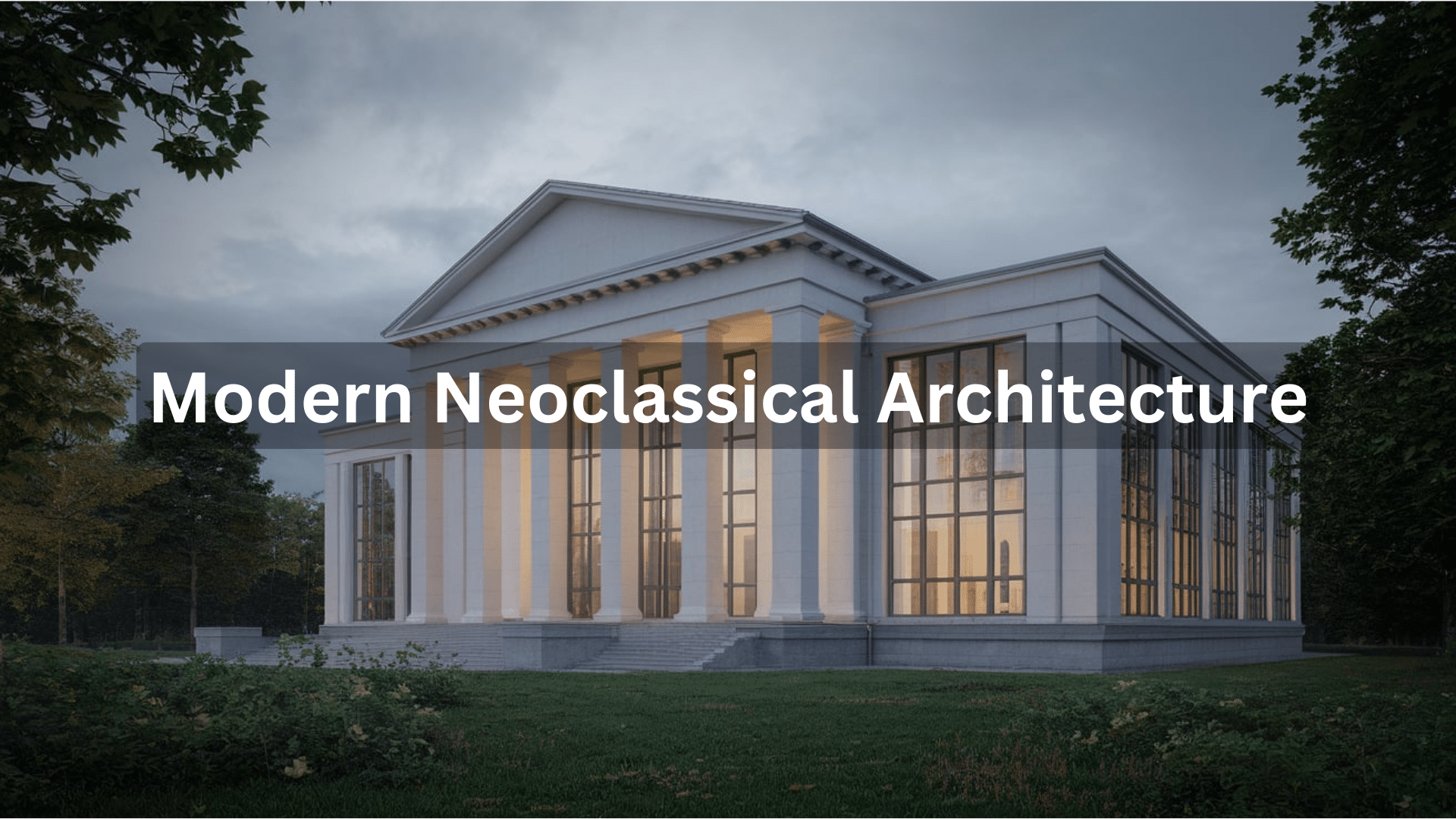Are you drawn to buildings that feel both classic and fresh? Do you love clean lines but also appreciate a touch of grandeur?
In this article, I’ll show you why modern neoclassical architecture continues to capture our interest. You’ll learn how this style blends timeless elements with modern touches and how you can bring this refined look into your own home.
No need to choose between classic and contemporary – modern neoclassical gives you the best of both worlds!
What Is Neoclassical Architecture?

Neoclassical architecture began in the mid-18th century as a reaction against the elaborate Baroque and Rococo styles. Designers looked back to ancient Greece and Rome for inspiration.
Why did it start? Excavations of Pompeii and Herculaneum sparked fresh interest in classical design. People also wanted buildings that reflected order, balance, and reason—values of the Enlightenment era.
The style quickly spread across Europe and America, becoming the go-to choice for important civic buildings that needed to show strength and permanence.
Key Features of Classic Neoclassical Design
What makes a building neoclassical? Look for these elements:
- Columns – Often in Doric, Ionic, or Corinthian styles
- Perfect symmetry – What you see on the left matches the right
- Domes and cupolas – Especially on larger public buildings
- Golden proportions – Mathematical ratios that please the eye
- Rich materials – Marble, limestone, and other natural stones
Think of the White House or the British Museum – clear examples of neoclassical design in action.
How Neoclassical Evolved into the Modern Look
Today’s neoclassical isn’t stuck in the past. It’s changed in some exciting ways.
Cleaner Lines, Same Classic Roots
Modern neoclassical architecture removes excessive decoration. You’ll still see columns and symmetry, but with less fuss.
The details are simpler and more refined. Moldings aren’t as deep or fancy. Ceilings might be offered but with cleaner geometry. This simpler approach keeps the dignity of classical design without feeling stuffy or dated.
Mixing Old and New Materials
One of the biggest changes in modern neoclassicism is the materials. Designers now boldly mix:
- Polished concrete with marble accents
- Steel frames with stone facades
- Floor-to-ceiling glass alongside classic columns
- Stucco exteriors with sleek metal details
This mix creates fascinating contrasts – strength meets grace, tradition meets innovation.
Symmetry with a Twist
While classical buildings were strictly symmetric, modern neoclassical takes more liberties. You might see a perfectly balanced front with one dramatic asymmetric feature. Or a classic layout with unexpected interior spaces. This approach keeps the eye pleased with balance while adding surprise and interest.
Where You’ll Spot It Today
Modern neoclassical isn’t hard to find once you know what to look for.
Government and Institutional Buildings

Many recent courthouses, city halls, and libraries use this style. It connects new buildings to their historic purpose while feeling current.
The Supreme Court of the United Kingdom (completed 2009) is a perfect example – classical proportions with modern detailing.
High-End Homes and Mansions
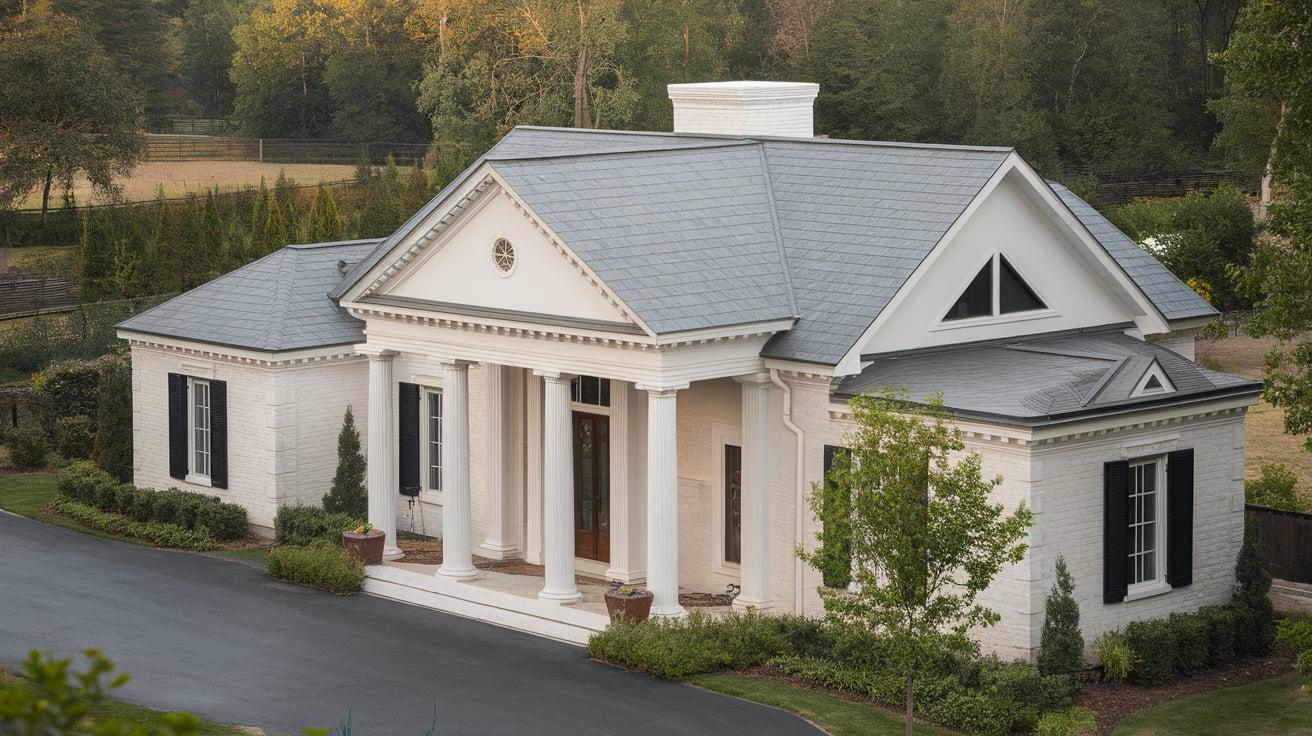
Luxury residential design often turns to modern neoclassical for its timeless appeal.
These homes typically feature:
- Clean white exteriors
- Symmetrical facades
- Simplified columns or pilasters
- Generous proportions
- Minimal but precise detailing
Luxury Hotels and Resorts
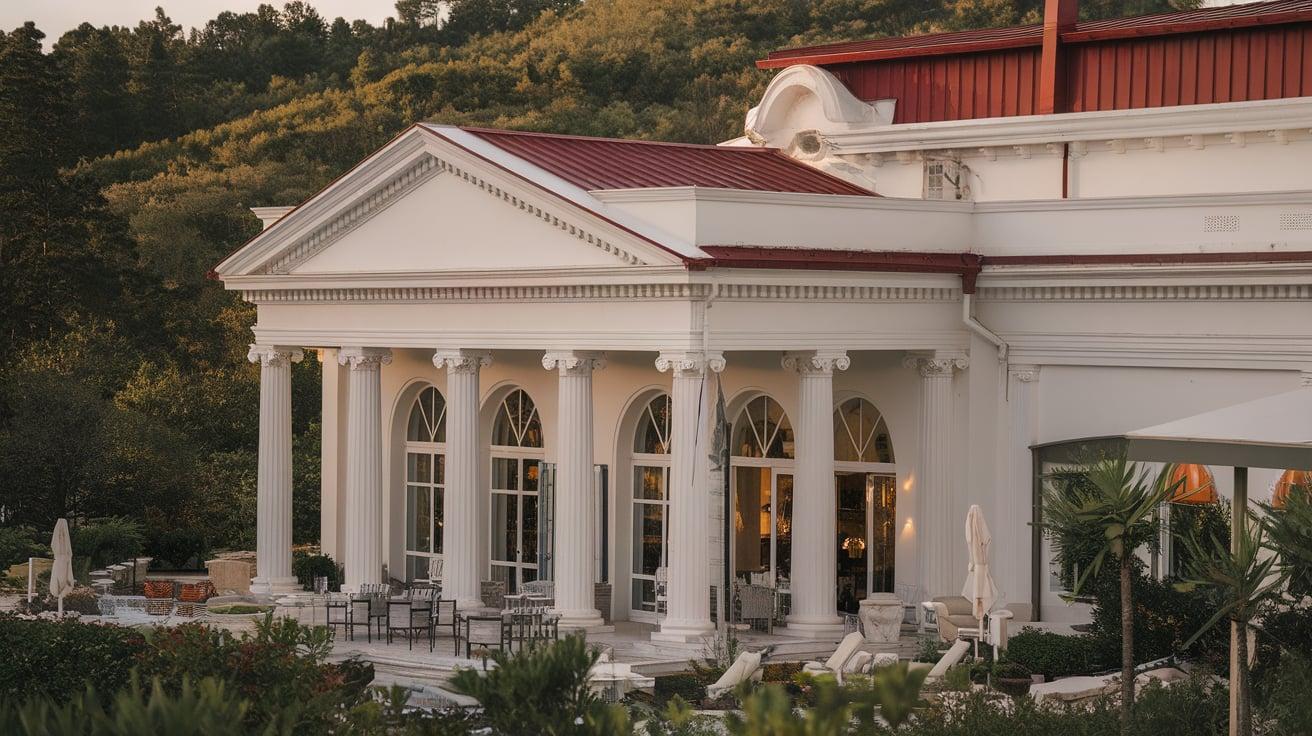
The hospitality industry likes modern neoclassical for its ability to signal quality without feeling outdated.
Look at hotels like the Four Seasons or Ritz-Carlton properties. Many feature grand entrances with modern classical elements that communicate richness and tradition.
Why People Still Love the Look
What makes this style last when so many others fade?
Timelessness
Modern neoclassical doesn’t chase trends – it builds on ideas that have worked for centuries.
When a building follows classical proportions, it tends to age well. Think about it: classical columns looked good in ancient Greece, in 18th century Europe, and they still look good today.
Instant Curb Appeal
There’s something deeply satisfying about a well-designed neoclassical building. Symmetry, balance, and proportion connect with our sense of order.
Studies show that humans naturally prefer balanced, organized designs – perhaps explaining why these buildings leave such a strong first impression.
Flexibility
Despite its formal roots, modern neoclassical works well with other styles.
Inside a modern neoclassical home, you can go:
- Fully traditional, with antiques
- Completely modern with minimal furniture
- Somewhere in between with transitional pieces
This flexibility makes the style practical for everyday living.
How to Add Modern Neoclassical Style to Your Own Home
You don’t need to rebuild your house to bring in this classic look.
Exterior Touches
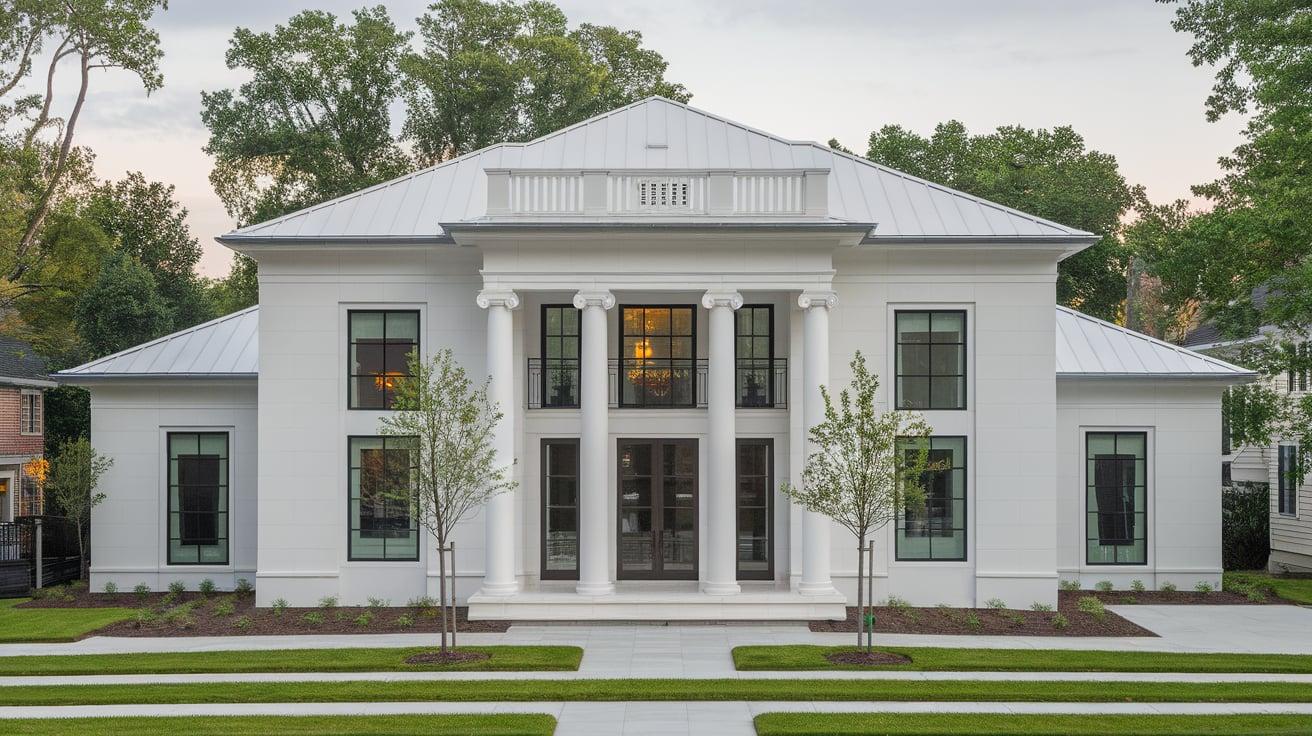
Small changes can make a big impact:
- Paint the exterior a crisp white or soft cream
- Add simple columns or pilasters around your entrance
- Install symmetrical lighting fixtures
- Update with a paneled front door
- Add a classic pediment over the doorway
Interior Ideas
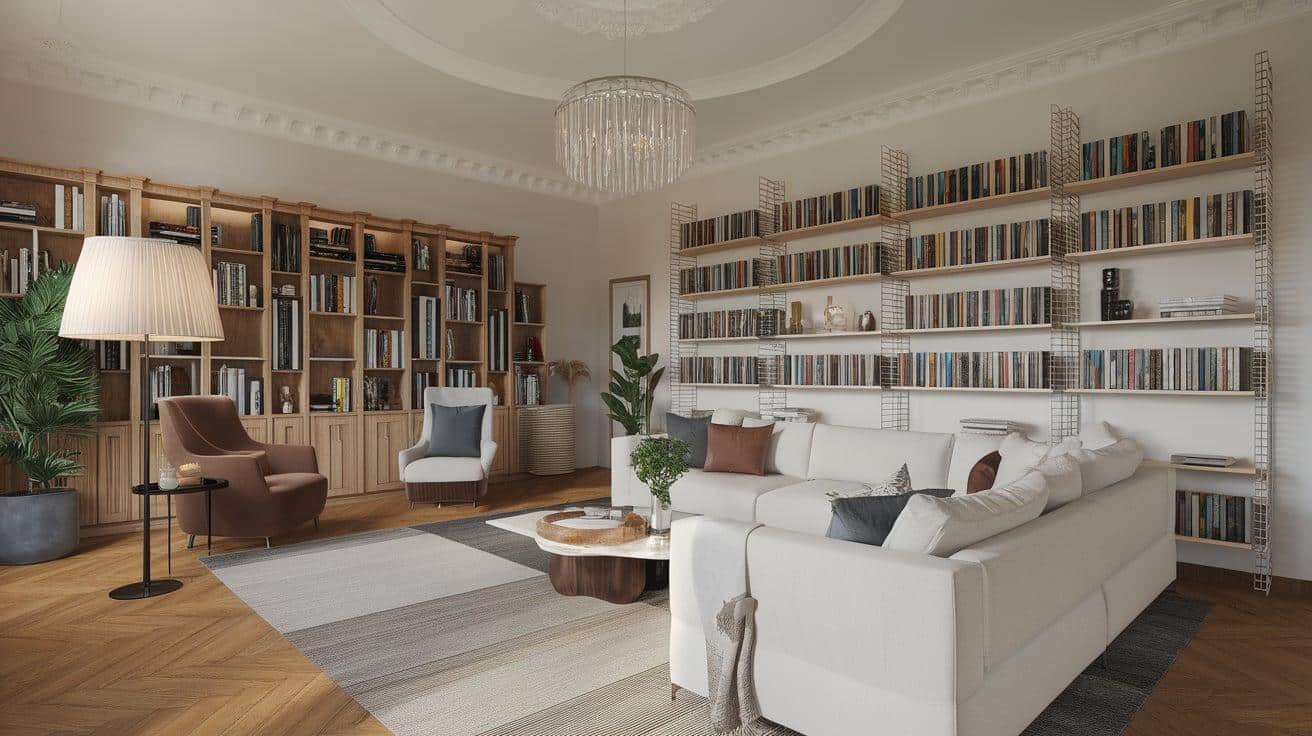
Inside, focus on creating a sense of proportion and light:
- Paint walls in neutral tones (white, cream, pale gray)
- Add simple crown molding
- Install French doors where possible
- Choose furniture with straight, clean lines
- Use marble or marble-look materials for counters or tables
Small Updates That Go a Long Way
On a tight budget? Try these easy changes:
- Hang curtains from ceiling to floor to create a height
- Arrange furniture symmetrically around focal points
- Add classic art prints in simple frames
- Use mirrors to create more light and space
- Choose accessories in pairs rather than one-offs
Real Examples to Inspire You
Modern Neoclassical Homes Around the World
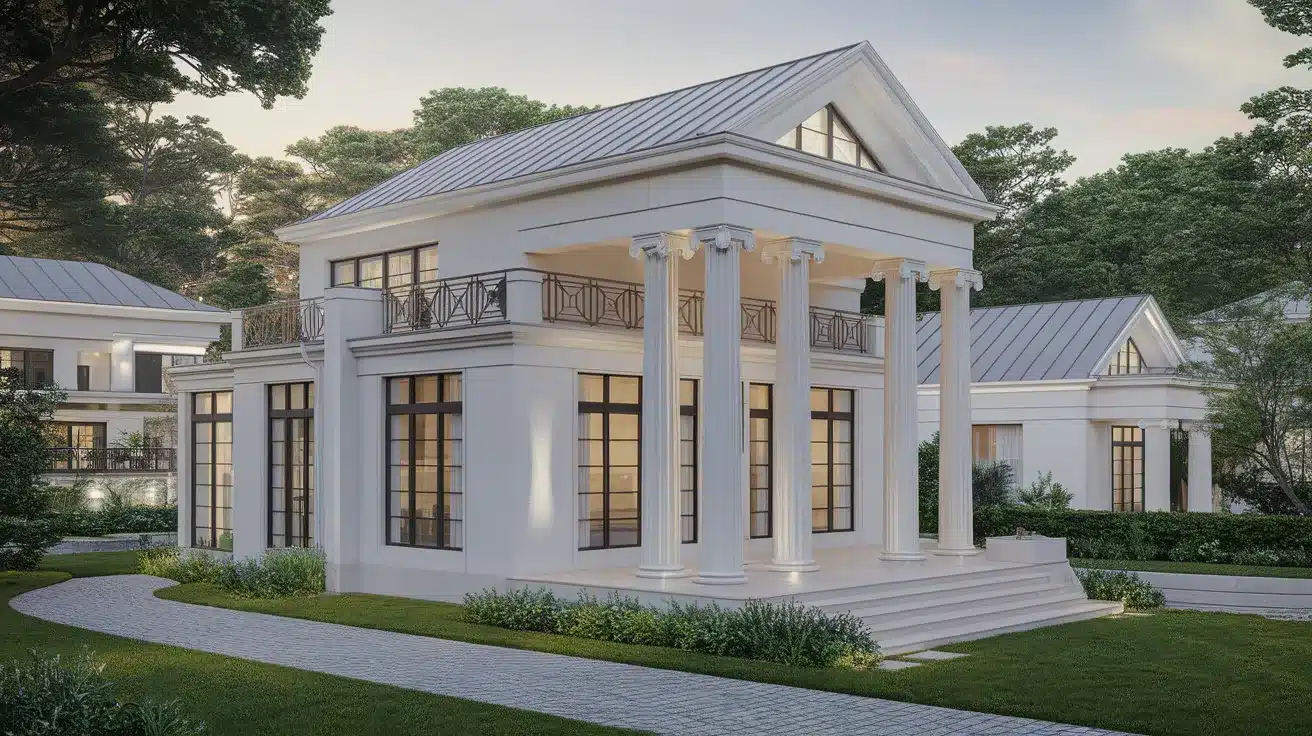
- London townhouses by designers like Kelly Hoppen combining Georgian proportions with minimal interiors
- California estates in Beverly Hills and Bel Air, where white modern-classical exteriors frame ultramodern interiors
- Australian beachfront homes that mix classical structure with indoor-outdoor living
- Singapore luxury properties that adapt neoclassical for tropical settings
- Famous Buildings That Nailed the Style
- The Getty Villa (California) – A modern take on an ancient Roman villa
- Museum of Modern Literature (Germany) – Simple columns and perfect proportions in concrete
- National Gallery Singapore – Colonial classical buildings updated with modern additions
- US Federal Courthouse (Austin) – Formal symmetry with contemporary materials
Conclusion
Modern neoclassical architecture shows that you don’t have to choose between old and new. It gives you the grandeur of the past, with the clean feel of today—which is exactly why it still works.
This style reminds us that good design ideas don’t go out of style. By focusing on proportion, balance, and quality materials, modern neoclassical creates spaces that feel both impressive and comfortable.
If you’re building new, renovating, or just updating your decor, the ideas of modern neoclassical architecture can help guide you toward a lasting look.
Frequently Asked Questions
Is modern neoclassical the same as traditional neoclassical?
Not quite. The modern version is simpler and cleaner and often uses modern materials like steel, concrete, and glass while keeping the classic structure and symmetry.
Is this style expensive to build?
It can be, but it depends on your choices. You can get the look with affordable materials and simple design tweaks. It doesn’t have to be high-end to feel refined.
Can I use this style in a small house?
Yes! You don’t need a huge space. To achieve the neoclassical look, use tall curtains, neutral paint, simple moldings, and balanced layouts.
What colors work best with this style?
Think soft and neutral—white, cream, taupe, stone gray, black accents, and touches of gold or brass.
What are the main design elements I should focus on?
Symmetry, clean lines, tall windows or doors, subtle moldings, and natural materials like marble or wood.

